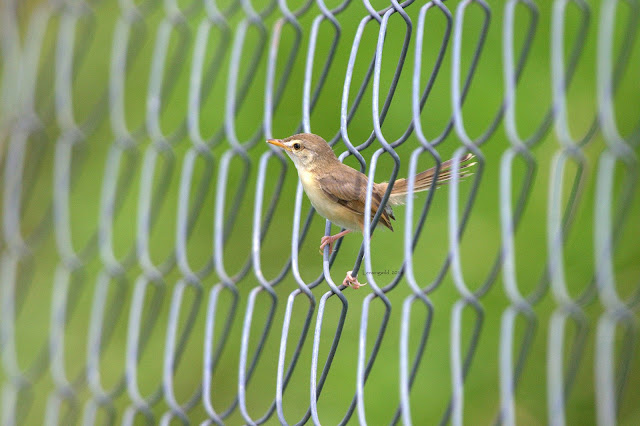Rescued Darter and a Heron
Last summer Adhi and I went for a
shooting expedition in Cauvery river, near kallanai. He enjoyed it completely, but I couldn't concentrate on photography much as I have to look after this kid. When we were
walking along the river in which the water flow was like a stream, we were
looking for birds. There we found a darter entrapped in a piece of waste cloth.
Its pointed dagger bill was clutching a piece of cloth. The very efforts made
by the bird to get rid of it made the cloth to twist and entangled the bird. It
was just trapped and sitting there. Even we approached closer it was unable to
fly away. I was bit hesitant to approach it further because Cauvery in that
part has many quicksands and it is common to have few deaths every year. I
tried to gather long sticks to reach the cloth and remove it. It was hard to
find strong sticks or poles to do the job. I observed that place carefully and the
presence of reeds and plants made me to think that there will not be much
danger. After warning Adhi not to
step-in the water at any cost, I approached the bird with a stick in hand. I could reach the bill of the bird from
thigh-deep water and poke it strongly to remove it. As soon as the trap is
removed the bird dropped like a dead one and submerged in water. I really
thought that bird was dead. It didn't surface even after a while. Though I didn't expect that to be dead, I was not sure about that.
 |
| Figure 2 - Though it tried, it can not get rid of the twisted cloth. |
Darter (Anhinga melanogaster) is also called as Snake-bird because of its long, snake-like neck.
In Tamil - பாம்புத்தாரா.
The one that is shown below is not a darter. It is a purple heron (Andea purpurea). பெரிய வெள்ளைக் கொக்கு (Ref. Salim Ali's book). Though the neck of the heron is longer and snake-like why people named darter as snake-bird (பாம்புத்தாரா)? I understand that when I was observing both birds for a while. When swimming the body of the darter remains submerged; only the slender snake-like neck shows above the surface, swaying and turning this way and that, aptly suggestive of the bird's name. It chases the fish under water and look at the feet (Fig. 1). Short legs and webbed feet. It is a swimming bird. However, heron is not a swimming bird even though it also feeds on fish. It never goes under water and stands tall above the surface and its tall neck helps to pick the fish.
 |
| Figure 3. Purple Heron |



Comments